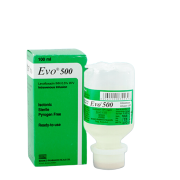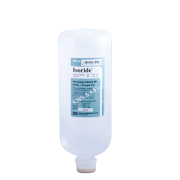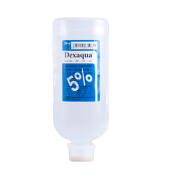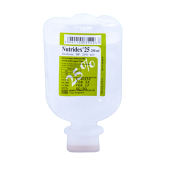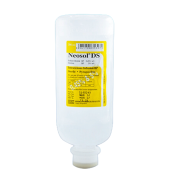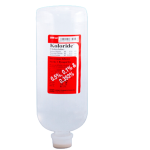Lactoride

Generic Name: Hartmann®s solution
Dosage Form: SalineCorrects hypovolemia caused by Surgery & hemorrhage Trauma Any other reason IV fluid of choice for Burn Patients
TG Name: Intravenous Fluids
1. What Lactoride is and what it is used for?
Lactoride is a sterile solution of Sodium Chloride, Potassium Chloride, Calcium Chloride and Sodium Lactate. Lactoride is used to treat hypovolemia caused by surgery, hemorrhage and trauma. Excessive sweating, severe diarrhoea or vomiting, excess loss of fluid by nephrotic kidneys, inadequate intake of fluid and electrolytes etc. that may lead to typical hypovolemic shock may be corrected with Lactoride. Severe plasma loss caused by intestinal obstruction, burns or other denuding conditions of the skin may be treated with Lactoride. Lactoride is mainly used as a fluid and electrolyte replenisher. It may be used as an alternative to Sodium Bicarbonate in the treatment of metabolic acidosis associated with dehydration and to alkalinize urine.
2. Before you take Lactoride
Do not take this medicine and tell your doctor if:
Hartmann’s solution may be relatively contraindicated in patients with diabetes mellitus, as one of the isomers of lactate is gluconeogenic.
Take special care with Lactoride
Check with your doctor before taking this medicine if:
Lactoride should not be administered rapidly or for prolonged periods. Since the solution contains different electrolytes, it should be infused with caution in patients where electrolyte imbalance may cause detrimental effects; e.g. in pregnancy, renal impairment, heart failure, pulmonary congestion, etc. or to patients receiving potassium sparing diuretics.
Pregnancy and breast-feeding
Pregnancy Category C. Animal reproduction studies have not been conducted with Lactated Ringer’s Irrigation. It is also not known whether it can cause fetal harm when administered to a pregnant woman or can affect reproduction capacity. It should be given to a pregnant woman only if clearly needed.
3. How to take Lactoride?
Taking this medicine. Always use Lactoride exactly as your doctor has told you. You should check with your doctor or pharmacist if you are not sure.
How much to take?
The volume and rate of infusion will depend upon the requirements of the patients and the judgement of the physician. It usually varies with age, weight and clinical condition of the patient. The recommended flow rate is up to 100-drops/minute/70 kg body weight. In burn patients the dose of Lactoride according to the Parkland formula : 4ml/kg body weight/% of Body surface area (BSA) burn (e.g. for a 30% BSAburn of a person having 60 kg body weight, 4 x 60x30ml = 7200 ml of Lactoride would be required in 24 hours). Half of this within 8 hr, the remainder over 16 hr.
4. Possible side effects
Hands, ankles and feet may become mildly swollen from fluid retention. Rarely, the lungs can also be affected, which may cause breathing difficulty. Other possible symptoms include nausea, vomiting, headache, dizziness, drowsiness, confusion, and inflammation or swelling of the veins around the site of the injection.
Tell your doctor if any of the side effects gets serious or lasts longer than a few days, or if you notice any side effects not listed in this leaflet
5. How to store Lactoride?
Lactoride should be stored at controlled room temperature.



